One of the most loved cuisines in the world, Thai cuisine has amassed a massive fan following among Indian foodies too. What makes Thai cuisine quite delightful is its use of contrasting flavours and how organically they come together. Loosely it falls into 4 categories which are called Tom, Yam, Tam, and Kaeng.
Tom refers to boiled dishes, like Tom Yam Kathi which is a soup with a coconut milk based broth. Yam refers to spicy salads, like Yam Tuna, which is a spicy tuna salad. Tam refers to ponded food, like Sam Tam Thai, commonly known as the Thai green papaya salad. Kaeng, which is what we are focusing on here, refers to curries like Thai chicken curry.
Ingredients for Thai curry
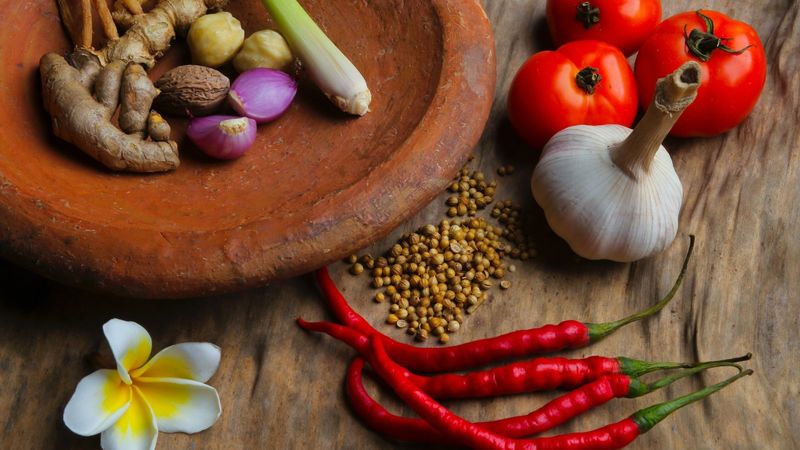
Thai curry recipe is an easy one and comes together with very few but extremely potent ingredients.
One of the main ingredients for Thai curry, especially recipes that are spicy, like Thai green curry recipe or Thai red curry recipe, is chilli paste. Depending on the colour, different chillies are used. Thai green curry recipe uses the green bird’s eye chillies which are said to be sharper and spicier than the red bird’s eye chillies used in the Thai red curry recipe.
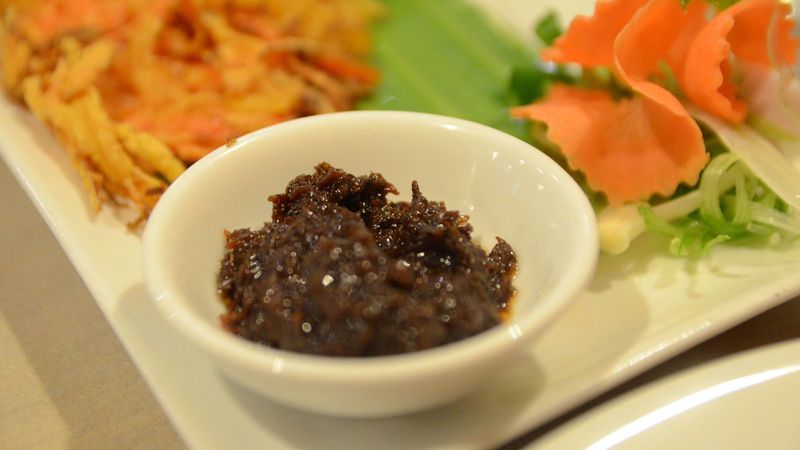
Shrimp paste is another major component of ingredients for Thai curry, and lends the classic umami flavour to the dish. It was also a great option historically as this shrimp paste, called Kapi, is made from sun-dried and fermented tiny shrimp or krill, making it an ingredient that lasted long and didn’t need refrigeration. Other ingredients for Thai curry include aromatics, herbs, and spices like lemongrass, galangal, fish sauce, peppercorn, onions, garlic, and tamarind.
While some are water-based broths, most Thai curry recipes use coconut milk as it not only adds a delightful fresh flavour, it also balances the heat from the chillies well. While authentic Thai curry recipes are often meat-based, over the years, many Thai green curry recipes and Thai red curry recipes are now exploring meatless protein or vegetable options.
Thai red curry recipe
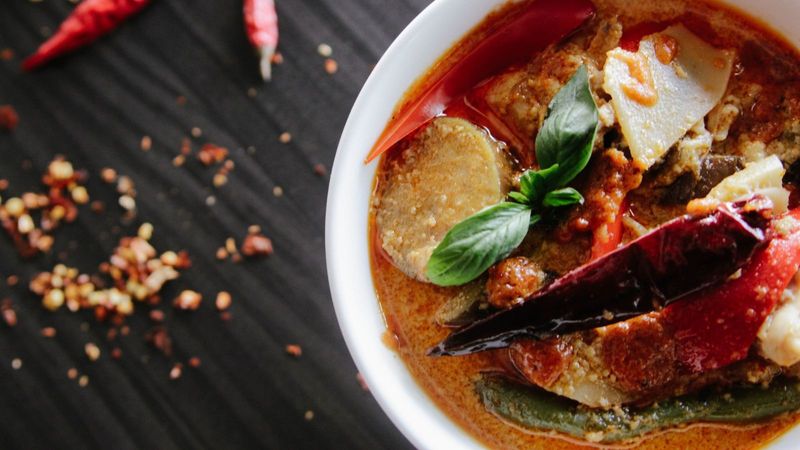
Kaeng Phet, as it is traditionally called, or Thai red curry, is a recipe that gets its beautiful red colour from red bell peppers, and red bird’s eye chillies. The paste used in the Thai red curry recipe, apart from these red chillies and peppers also uses ingredients like galangal, shallots, garlic, ginger, lemongrass, and coriander roots. In terms of spices, it includes cinnamon, cumin, coriander, cloves, cardamom, and nutmeg.
Once made into a paste, these ingredients for Thai curry are added to a pan, and coconut milk and crushed kaffir lime leaves are added, and the soup is then brought to a boil.
After this, vegetables or protein of your choice can be added to the broth. Traditionally, Thai curries happen to be made with meat, fish or shellfish but with newer versions coming up, you’re spoilt for choices when it comes to the ingredients for Thai curry. For a vegetarian version, you can vegetables like baby corn, eggplants, cauliflower, green beans, peppers, and even potatoes. If you want to add protein to the vegetarian Thai red curry recipe, we suggest adding cottage cheese, and tofu is a popular choice the world over for vegan versions of the Thai curry recipe.
Thai green curry recipe

Often referred to as Kaeng Khiao Wan, the Thai green curry recipe is a rather recent one. Unlike other Thai curries, there are no mentions of the Thai green curry recipe in the historical texts about Thai cuisine. The first ever mention of the dish is in a 1926 cookbook and is assumed that the political turmoil and changes in Thailand in the 1920s contributed to the conception of this beloved Thai curry recipe.
The Thai green curry recipe gets its green colour from the green bird’s eye chillies, said to be spicier than their red counterparts, and their sweetness from adding basil leaves to the paste. Made freshly, the paste used in the Thai green curry recipe also has galangal, white peppercorn, lemongrass, cumin, dried coriander, shallots, fresh coriander, and garlic. Traditionally, these ingredients for Thai curry, are added to a shrimp paste, called kapi, which lends the distinct umami flavour to it. A lot of vegetarian or vegan recipes skip that and use other options like miso paste. Another key ingredient in the Thai green curry recipe is makrut lime zest.
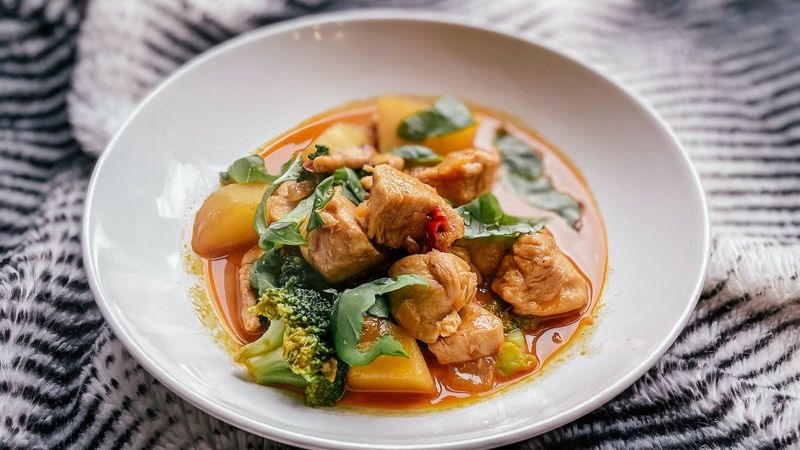
Apart from these two major Thai curry recipes, you can also Thai yellow curry, which gets its distinct colour from the addition of turmeric, and crowd favourites like the Thai chicken curry, which while not a traditional recipe, is loved all over the world.
A beautiful blend of flavours, these Thai curry recipes are enjoyed best with rice or noodles, and if you want a bit of crunch, do add some toasted peanut bits on top while serving. If you’re trying these or any other Thai dishes, don’t forget to check our list of essential ingredients to cook Thai cuisine at home.



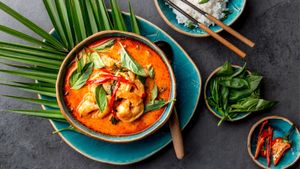
_1682388604832_thumb_300.png)